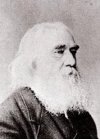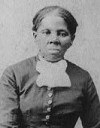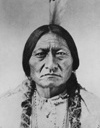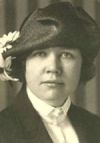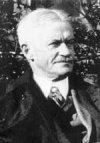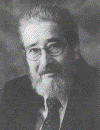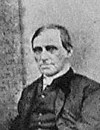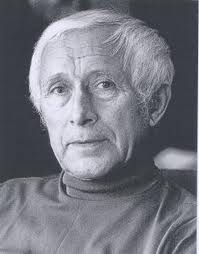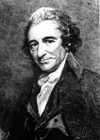Shooting in Self-Defense: Compare and Contrast
From Tyrus Coleman v. State of Indiana, which is currently before the Indiana Supreme Court on transfer:
Sometime in November 2006, Anthony Dye (“Dye”) was robbed by Omar Sharpe (“Sharpe”) and another man. During the robbery, the men took money and Dye‟s gold chain. Because Dye knew that the two men were associated with a recording studio owned by Coleman, he went to Coleman‟s studio, armed with a handgun for protection, to talk to Coleman about the robbery. Although Coleman did not know about the robbery, he apologized to Dye and offered to find out what he could. Coleman was able to recover Dye‟s gold chain from Sharpe and called to arrange a time to return it in December. At some point after retrieving the gold chain from Coleman, Dye found out that Coleman had bonded Sharpe out of jail. Dye called Coleman to express his displeasure with this and to tell him that if Dye found out that Coleman had anything to do with the robbery, “there would be problems for [Coleman],” which Coleman understood as a threat to his life. 2008 Tr.2 at 274.
In February 2007, Dye‟s son, Jermaine Jackson (“Jermaine”), heard about the robbery and called Dye to inquire as to why Dye had not told him about it. Dye told Jermaine that he had not mentioned it because he did not want Jermaine to get in any trouble. Id. at 128. On March 18, 2007, Dye received a call from Jermaine, who told Dye that Sharpe was located at an apartment complex in Elkhart. Dye told Jermaine, “Don‟t do nothing. I‟m on my way.” Id. at 130. When Dye was on his way to the apartment complex, Jermaine called back to let Dye know that Sharpe had already left. After going to the shooting range with a friend, Jermaine had the friend drive him to Coleman‟s recording studio because he said he had “to do something for his dad.” Id. at 162. When they arrived at the studio, Jermaine saw another friend and asked this friend to go get Sharpe. The friend went inside the studio and told Sharpe that Jermaine wanted to see him. During this time, Jermaine had walked around to the entrance of the studio.
Coleman stepped outside and asked Jermaine what was going on, to which Jermaine replied, “You already know.” Id. at 280. While Coleman was talking to Jermaine, Sharpe walked outside to see what Jermaine wanted. Within seconds, Jermaine pulled a handgun out of his waistband and pointed it at Sharpe, who ran back into the studio. Jermaine chased Sharpe and a struggle occurred between Jermaine, who was trying to push the studio door open, Sharpe, who was closing the door to prevent Jermaine from entering, and Coleman, who was trying to keep Jermaine from raising the gun at anyone. Eventually, Sharpe and Coleman were able to get the studio closed, leaving Jermaine and Coleman outside. Jermaine returned the handgun to the waistband of his pants.
Coleman continued to attempt to calm Jermaine down and to ask him to leave. Jermaine then began calling people on his cell phone and asking them to come to the studio, despite Coleman‟s requests not to do so. Jermaine called Dye, who was riding around with his girlfriend, and told Dye to come over to the studio immediately. Although Jermaine did not tell him so, Dye had a “gut feeling” that Sharpe was at the studio. Id. at 132. Dye retrieved a handgun from the engine of his car, where he stored it, and had his girlfriend drive him over to Coleman‟s recording studio. At some point during this time, Coleman retrieved a handgun from inside of the studio, which he held in his hand for the remainder of the confrontation. Coleman also called Jermaine‟s cousin and friend, Otis Jackson (“Otis”), and asked him to come over to try to calm Jermaine down.
During this time, Coleman‟s son had been playing basketball in the front of the house. Coleman told his son to go inside of the studio. The son attempted to leave the studio, and Coleman, motioning with his handgun, ordered the boy back in the studio. When Otis arrived, he tried to get Jermaine to calm down by telling him it “wasn‟t worth it,” that there were kids around, and that he should just leave. Id. at 220-21. Coleman also stated that his son was inside of the studio and that Jermaine should respect that. Jermaine replied, “F**k that. [Sharpe] didn‟t think about that sh*t when he did this sh*t to my Daddy.” Id. at 221. Jermaine also stated that he was going to “beat [Sharpe‟s] ass” and “pop him.” Id. at 294.
Shortly thereafter, Dye arrived and entered the backyard area near the studio. Dye held a handgun in his right hand, down at his side, and pointed at the ground. Otis testified that Dye appeared “pretty aggressive” when he walked into the backyard and looked “like he was there to take care of some business.” Id. at 225-26. When Dye walked toward Jermaine, he saw that Coleman had a gun in his hand and was standing near the studio door. Dye then stated, “F**k all that sh*t. Where the n**ger at,” referring to Sharpe. Id. at 135, 223, 295. As Dye came within feet of him, Coleman raised his gun and shot Dye twice. Jermaine then pulled out his handgun and began shooting at Coleman; Coleman turned and shot at Jermaine. The entire exchange of gunfire lasted three seconds. Jermaine died as a result of his injuries. After the shooting, Coleman went back in the studio and had a friend take his son to his grandmother‟s house. Coleman drove to Milwaukee, disposing of his gun on the way, and stayed for several days before returning and surrendering to the police.
From People of the State of Colorado v. Charles La Voie, via Orin Kerr at the Volokh Conspiracy, who calls it one of his “favorite criminal law cases”:
The defendant was employed as a pharmacist at the Kincaid Pharmacy, 7024 West Colfax Avenue, Lakewood, Colorado. His day’s work ended at about 12:30 A.M. After leaving his place of employment, he obtained something to eat at a nearby restaurant and started on his way home. He was driving east on West Colfax Avenue, toward the city of Denver, at about 1:30 A.M. An automobile approached his car from the rear. The driver of this auto made contact with the rear bumper of defendant’s car and thereupon forcibly, unlawfully, and deliberately accelerated his motor, precipitating the defendant forward for a substantial distance and through a red traffic light. There were four men in the automobile who were under the influence of intoxicating liquor in varying degrees. Prior to ramming the car of the defendant they had agreed to shove him along just for “kicks.” The defendant applied his brakes to the full; but the continuing force from behind precipitated him forward, causing all four wheels to leave a trail of skid marks. When defendant’s car ultimately came to a stop the auto containing the four men backed away a few feet. The defendant got out of his car and as he did so he placed a revolver beneath his belt. He had a permit to carry the gun. The four men got out of their auto and advanced toward the defendant threatening to “make you eat that damn gun,” to “mop up the street with you,” and also directed vile, profane and obscene language at him. The man who was in advance of his three companions kept moving 1003*1003 toward defendant in a menacing manner. At this point the defendant shot him. As a result, he died at the scene of the affray.
For the disposition of these cases at the trial court level, and on appeal, continue reading after the jump.
Tyrus Coleman:
The State charged Coleman with murder for killing Jermaine and attempted murder, a Class A felony, for shooting Dye, who survived his injuries. On February 11-13, 2008, a jury trial was held, at which Coleman argued that he acted in self-defense when he shot Jermaine and Dye. At the conclusion of the trial, the jury found Coleman not guilty as to murder but was unable to reach a verdict as to attempted murder. The trial court set Coleman‟s attempted murder charge for another trial. On November 10, 2008, Coleman filed a motion to dismiss the attempted murder charge by reason of collateral estoppel. After a hearing, the trial court denied the motion. Coleman was retried on the attempted murder charge on March16-18, 2009, and the jury found him guilty. He was sentenced to an aggregate sentence of forty-five years.
. . .
Therefore, in acquitting Coleman of murdering Jermaine based upon self-defense in the first trial, the jury must have necessarily decided that Coleman‟s use of force against Dye was also not a crime. If Coleman‟s use of force against Dye was a crime, then the jury could not have reasonably determined, pursuant to the final instructions given, that Coleman‟s use of force against Jermaine was justified. Thus, the doctrine of issue preclusion barred the State from re-litigating the issue of whether Coleman‟s actions against Dye constituted attempted murder. The trial court should not have denied Coleman‟s motion to dismiss.
Reversed.
Charles La Voie:
The defendant in error, to whom we will refer as defendant, was accused of the crime of murder in an information filed in the district court of Jefferson county. He entered a plea of not guilty and a jury was selected to try the case. At the conclusion of the evidence, the trial court, on motion of counsel for defendant, directed the jury to return a verdict of not guilty. It was the opinion of the trial court that the evidence was insufficient to warrant submission of any issue to the jury in that the sum total thereof established a clear case of justifiable homicide. The district attorney objected, and the case is here on writ of error requesting this court to render an opinion expressing its disapproval of the action of the trial court in directing the verdict of not guilty.
. . .
The defendant was a stranger to all four occupants of the auto. He was peaceably on his way home from work, which terminated after midnight. Under the law and the circumstances disclosed by the record, defendant had the right to defend himself against the threatened assault of those whose lawlessness and utter disregard of his rights resulted in the justifiable killing of one of their number.
The judgment is affirmed.

 Follow
Follow